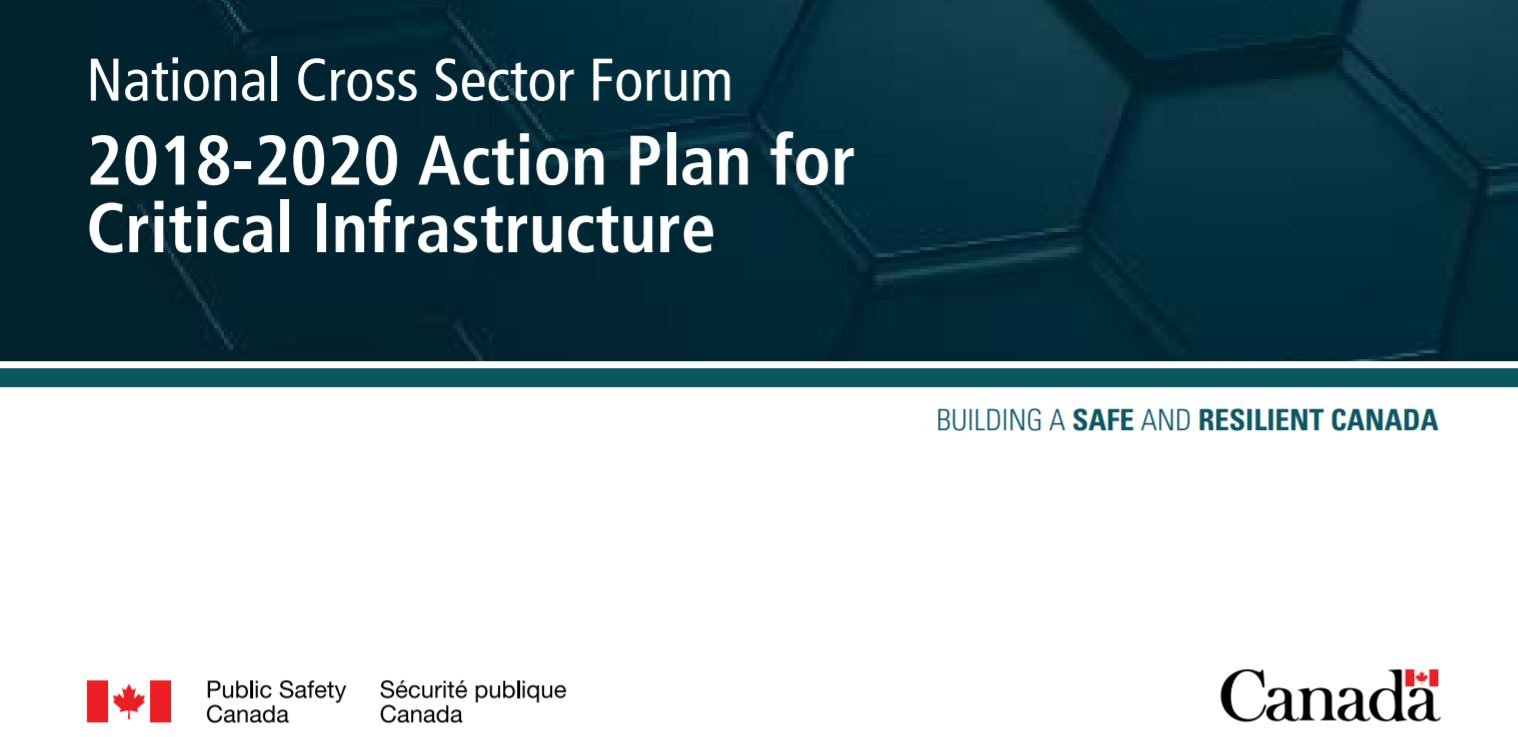Public Safety Canada
2018
Canada’s economic stability and national security depend on resilient critical infrastructure,
such as banking, communications, and transportation. On a daily basis, Canadians count on
critical infrastructure to provide safe food, clean water, reliable energy, and other essential
services.
The resilience of Canada’s critical infrastructure is dependent on the ability of owners and
operators to respond to a rapidly-evolving risk landscape. These risks, as they relate, for
example, to terrorism, natural disasters, and cyber attacks, can compromise the safety and
security of communities and critical infrastructure, and by extension, have a significant impact
on the well-being of Canadians. To address this evolving risk environment, the National
Cross Sector Forum 2018-2020 Action Plan for Critical Infrastructure (the Action Plan) sets
out tangible initiatives that promote a collaborative approach among governments and critical
infrastructure sectors to identify and manage risks before they lead to disruptions.
The 2018-2020 Action Plan continues to support the three strategic objectives identified in the
National Strategy for enhancing the resilience of critical infrastructure in Canada:
• Building partnerships;
• Sharing and protecting information; and,
• Implementing an all-hazards risk management approach.
This renewed Action Plan sets out concrete activities under each of these three strategic
objectives and takes a close look at the risks that the critical infrastructure community faces
today, and those it might face in the coming years. It also considers accomplishments resulting
from previous and ongoing collaborative efforts among all levels of government and critical
infrastructure sectors.
Reference:
https://www.publicsafety.gc.ca/cnt/rsrcs/pblctns/pln-crtcl-nfrstrctr-2018-20/pln-crtcl-nfrstrctr-2018-20-en.pdf



































